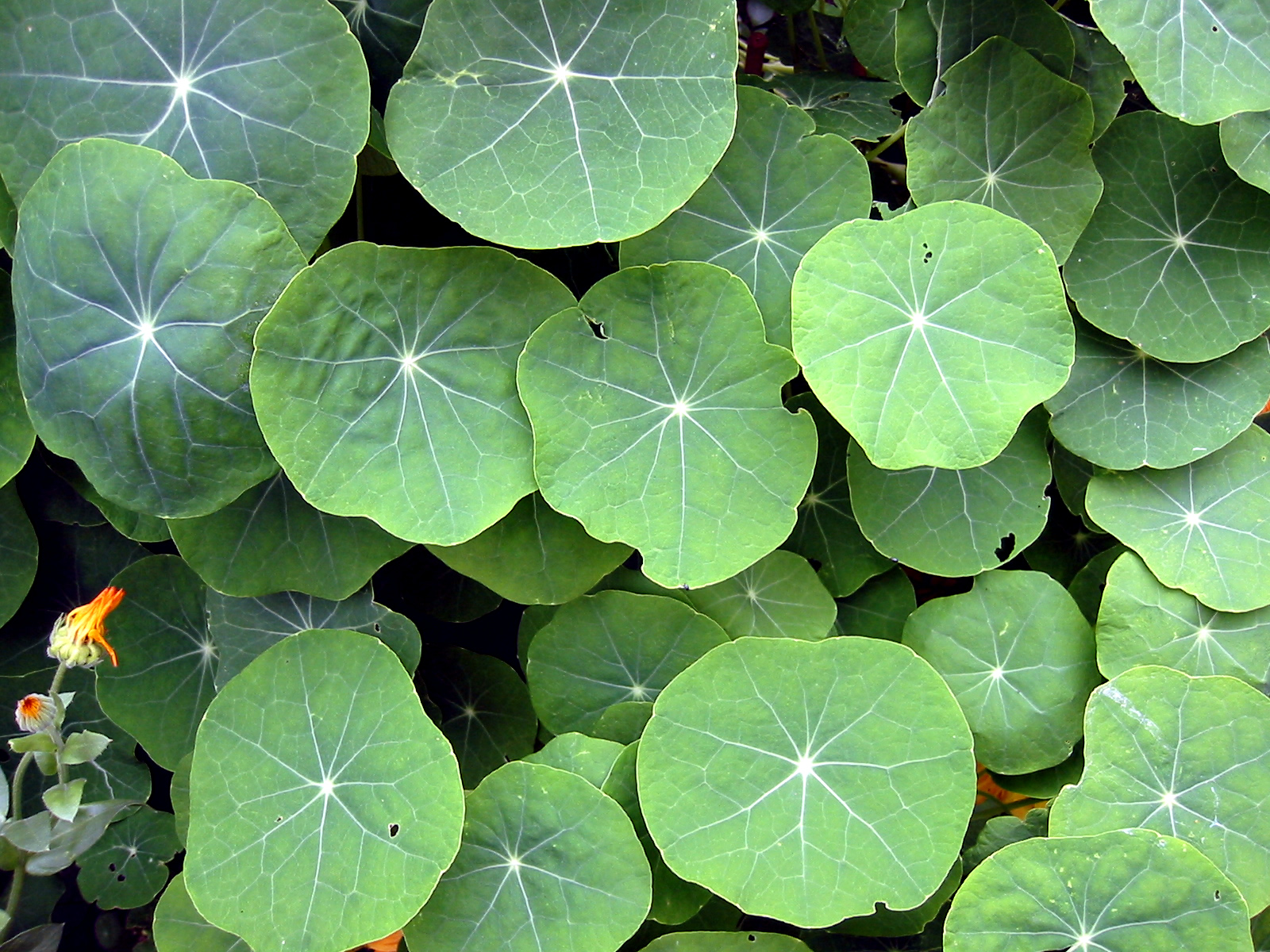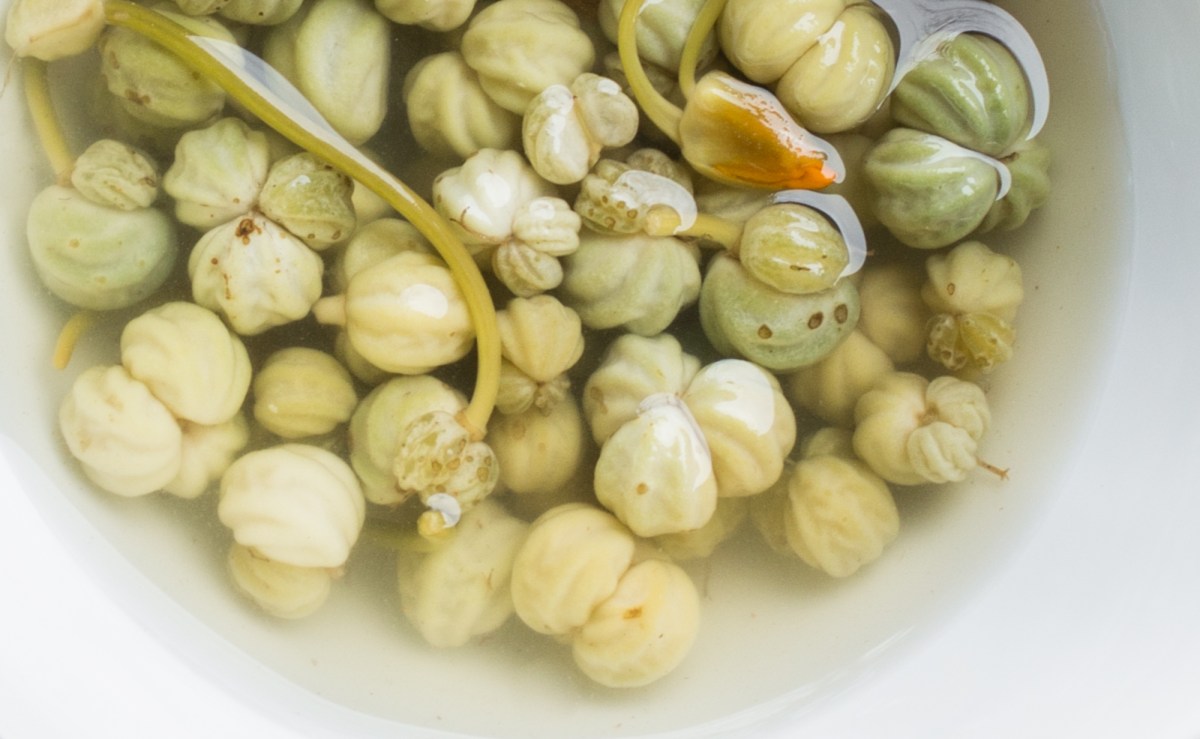All hail the versatile nasturtium! We all know and love the cheerful flowers, but do you know what else this attractive plant can do for you?
Apart from decorating the garden, nasturtiums can be used as companion plants amongst tomatoes, radish, cabbage and cucumbers. Or, plant them under fruit trees to help to deter aphids and pests. They also act as an aphid trap – their colourful display draws the pests away from your precious produce.
When it comes to providing food, the leaves, flowers and the seeds of the nasturtium can be put to very flavourful uses.
The flowers can be eaten in salads, chopped up to flavour butter, stuffed with herbed cream cheese or used to decorate cupcakes or larger cakes.
The leaves have a mustardy, slightly sharp flavour. They can be chopped raw into salads, used to make pesto, cooked, used to flavour vinegar or dried.
Here are some simple nasturtium recipes.
Nasturtium Pesto
Makes 2 cups
Ingredients
- 4 cups nasturtium leaves
- 2 cups nasturtium flowers
- 1½ cups olive oil
- 5 cloves garlic
- 1 – 1½ cups pine nuts or sunflower seeds
- 1 to 1½ cups shredded Parmesan cheese
Pick a basket full of fresh, healthy leaves and flowers without any blemishes. If your plants aren’t blooming yet, using only the leaves is fine too.
Thoroughly wash and dry the leaves and flowers; tear larger leaves in half.
Add the leaves, flowers, garlic, olive oil, nuts or seeds and Parmesan to a blender or food processor and blend all the ingredients until the mixture is smooth.
Ladle the pesto into small sterile jars, refrigerate, and enjoy! The pesto should keep for up to two weeks.
Stuffed Nasturtium Leaves
Your stuffing can be similar to what goes into Greek dolmades or you can make a vegetarian mixture, using onion, mushrooms, butternut and herbs. They can be served as snacks, starters or main course, warm or cold.

Ingredients
About 20 fresh nasturtium leaves, with their stems trimmed
¾ cup vegetable or chicken stock
For the Filling
- 1 cup cooked rice
- 1tablespoon olive oil
- 1 onion, finely chopped
- 1 – 3 garlic cloves minced
- 1 cup chopped seeded tomato
- 500 g minced beef, lamb or pork
- 1/3 cup toasted chopped nuts or sunflower seeds
- ¼ cup chopped fresh parsley
- ½ cup chopped nasturtium flowers
- 1½ tablespoons capers or pickled nasturtium seeds
- 1 tablespoon olive oil
- 1 teaspoon lemon juice
- Salt and pepper to taste
Preheat the oven to 1800. Grease a large glass or ceramic baking dish.
Add the rice to a large mixing bowl.
Heat the olive oil in a medium skillet. Add the onions and cook until they start to soften, then add the garlic and tomato. Cook the tomato for three minutes and add the mixture to the rice.
Return the pan to the heat and cook the meat, stirring. Add to the rice.
Stir in the chopped nuts, fresh parsley, nasturtium flowers, capers, lemon juice and olive oil. Season to taste with salt and fresh pepper.
To stuff the nasturtium leaves:
Place a nasturtium leaf on a flat work surface, stem side down. Add a scoop of filling to the centre of the leaf. Fold the two sides partially over the filling, then roll to make a parcel. Place seam side down into baking dish.
Repeat with the remaining leaves. Pour stock over the leaves and cover the dish tightly. Bake for about 45 minutes.
Dried Nasturtium Leaves
The leaves can be dried in a drier or you can put them on a baking tray and dry them in your oven at a very low heat. Store the dry leaves in a glass jar or paper packet.
The dried leaves can be powdered and sprinkled onto food, or mixed into salt and used like herbal seasoning.
Nasturtium Tea
Immerse 1 cup nasturtium flowers and leaves in 1 litre boiling water in a jug.
Cover and allow to brew for 15 mins. Strain and drink as refreshment or to sooth a cough or cold. You might want to add honey.
People also use the tea as skin toner or hair rinse.
Nasturtium Vinegar
Pick 1-2 cups fresh nasturtium flowers. Gently shake them to make sure there are no insects hiding in the petals.
Place the flowers into a glass jar. Completely cover the flowers with your chosen vinegar (white wine vinegar or apple cider vinegar or white vinegar).
Add the lid to your jar and let it sit in a cool place to infuse for at least seven to 21 days. After a few days you will notice that your vinegar is turning a lovely shade of orange, red or yellow, depending on what colour flowers you use.
Pickled Nasturtium Seeds
These are known as poor man’s capers. (Capers are the unripe, green flower buds of the caper bush Capparis spinosa.)

Ingredients
- 1 cup nasturtium seeds, still firm and green
- 1 cup white wine vinegar
- 1 teaspoon salt, or to taste
- 5 to 8 peppercorns, slightly crushed
- Sprigs of dill or thyme. or bay leaves
- 2 tsp sugar
Pick nasturtium seeds from the nasturtium plants while they are still green and rinse them in a bowl of cold water.
Place the clean pods in a glass jar. Boil the vinegar, salt, pepper and sugar. Add a few sprigs of fresh dill/thyme or a couple of bay leaves to seeds in the jar, then pour pickling solution over. Seal and place in a dark, cool, spot. Allow to pickle for at least one to two weeks.

